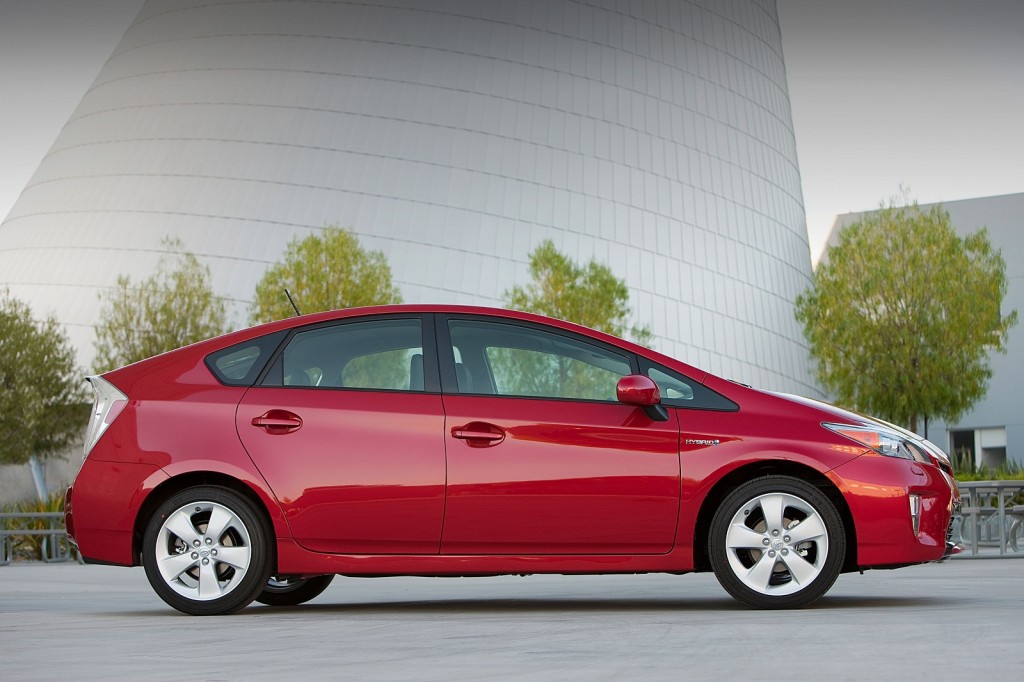The idea of an all-electric Nissan BladeGlider sports car now seems to be somewhere between delayed and defunct, but the narrow-front delta-wing shape continues to intrigue and challenge vehicle designers.
First unveiled in 2010 as a pure race car, an engine-driven DeltaWing car even competed in the 24 Hours of Le Mans back in 2012.
Recently, an offshoot of the DeltaWing racing operation proposed a road-going four-seat version of the car, equipped with such mundane passenger-car equipment as conventional hinged doors.
DON'T MISS: Nissan BladeGlider Concept: Electric Delta Wing Racer For The Road (Nov 2013)
And, its designers suggest, the distinctive (and patented) design, with its narrow nose and closely-spaced front wheels, can return some truly spectacular fuel-economy figures.
Using such metrics as weight, power, drag coefficient, and more, an independent study by Meszler Engineering Services estimates that the car could return an EPA-rated fuel economy of 57 miles per gallon combined. Highway mileage rating would be even higher, at a remarkable 74 mpg.
However, the calculations are for "unadjusted" EPA ratings, so it's possible that the final figures on such a vehicle's window sticker--intended to reflect more realistic "real world" results--could be 20 to 30 percent lower.

2015 Toyota Prius Liftback
The calculations assume the car is fitted with a conventional 138-horsepower 1.4-liter engine, mounted transversely and powering the rear wheels. Such an engine is similar to those built in the millions by makers that include Fiat Chrysler, General Motors, and others.
It's worth noting, however, that the fourth-generation version of the Toyota Prius hybrid is expected to return ratings of 55 mpg combined, perhaps even 60 mpg combined for a version with a larger battery pack.
That car will likely be unveiled this fall at the Tokyo Motor Show.
ALSO SEE: Auto Industry Doing Fine In Meeting Gas-Mileage Goals, It Turns Out (Aug 2014)
Thus far, carmakers have handily met their corporate average fuel economy mandates from 2012 through 2015, largely by using more conventional technologies: smaller engines, multi-gear transmissions, improved aerodynamics, and lighter weight.
But a midterm review coming in 2017 will assess whether it's possible to continue that trajectory using known technology (and a greater degree of electrification, in the form of hybrids, plug-in hybrids, and battery-electric cars).
A running demonstration version of a four-seat car that could return an EPA combined rating of more than 50 mpg--without having to fit the expensive battery pack, electric motors, and other electronic components of a hybrid--could make a powerful statement about what's possible with some innovation.

DeltaWing four-seater road car concept
DeltaWing says it has no intention of getting into the car business itself--unlike Aptera, Elio, and other ambitious startups with unusually-shaped designs.
Instead, it hopes to license its designs to automakers willing to build the radical design in hopes of offering a far lighter and more fuel-efficient vehicle than any sold today.
The company is simultaneously working on the latest version of a two-seat racing car in the same shape.
MORE: Gas Mileage Rules For 2025 Could Be Lowered If Buyers Stick With SUVs
It is expected to be far more fuel-efficient than competitors in the GT class--giving it a distinct edge in endurance racing, where every pit stop for fuel hurts competitiveness.
DeltaWing says its new engineering chief, Brian Willis, will supervise further development of both two- and four-seat versions of the DeltaWing road car.
Those will be used to refine the design and look at practicality issues in real-world testing.
If only it were an SUV ....
_________________________________________________













